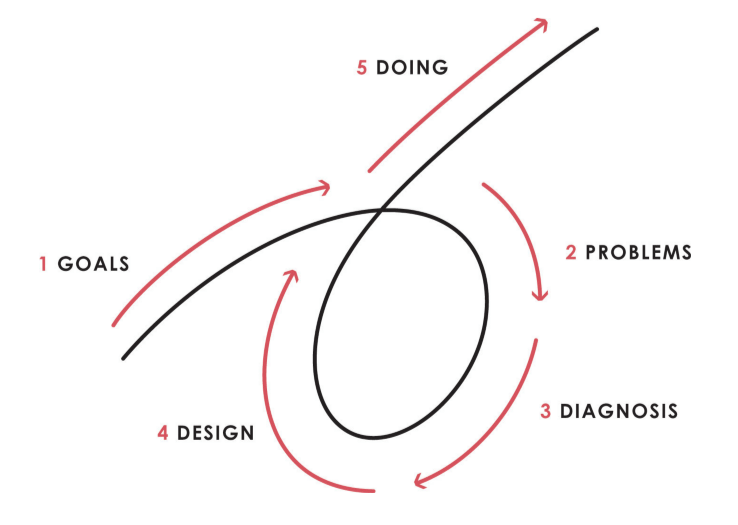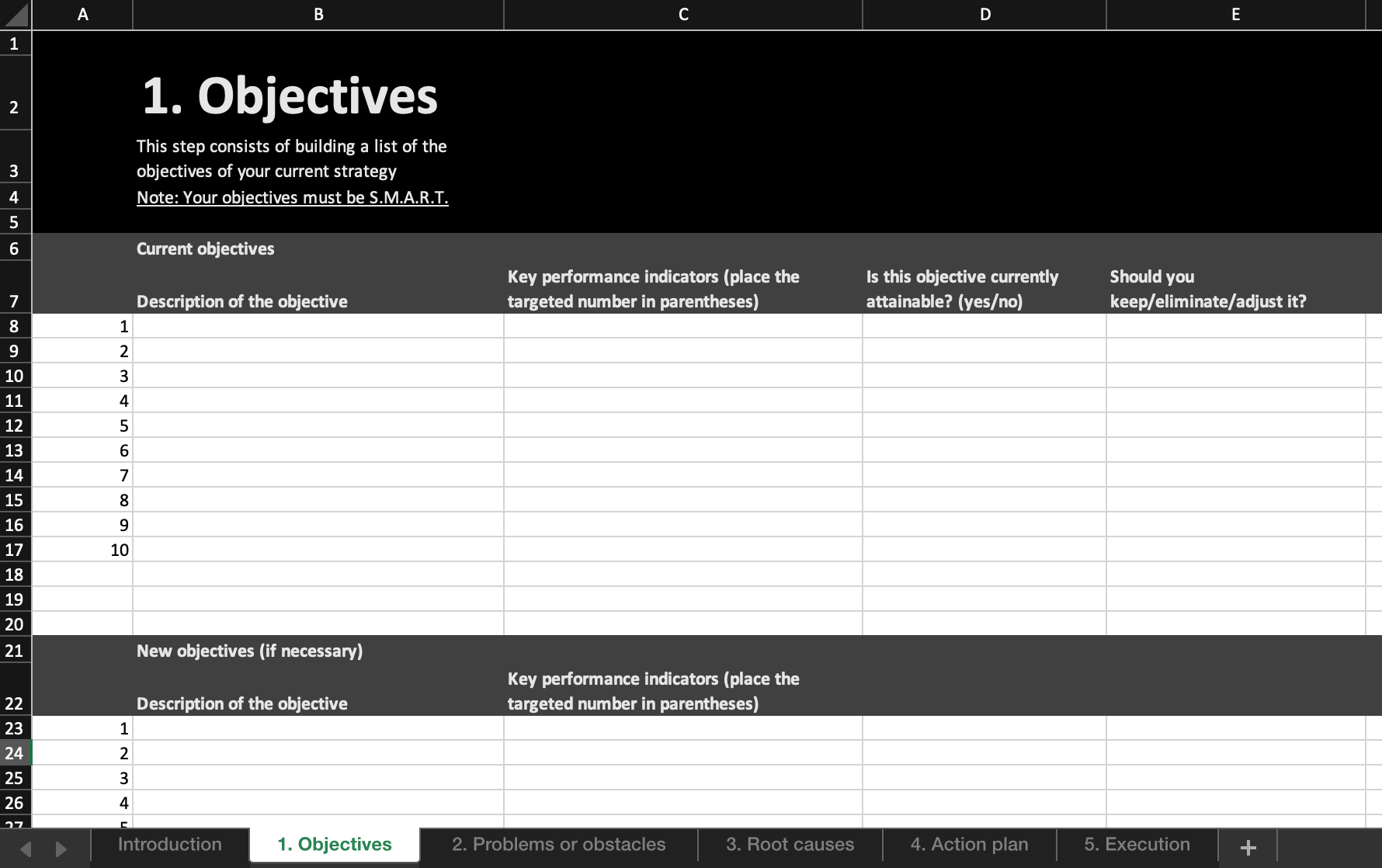[Step-By-Step] Optimize your content strategy (updated 2023)
![[Step-By-Step] Optimize your content strategy (updated 2023)](https://www.toaststudio.com/cdn-cgi/image/quality=90,gravity=auto,sharpen=1,metadata=none,format=auto,onerror=redirect/wp-content/uploads/2020/12/jungwoo-hong-cYUMaCqMYvI-unsplash.jpg)
A simple, 5-step process to solve challenges and obstacles in your content strategy
You already have a content strategy in place. Whether fully documented or executed on a more ad-hoc basis, your brand already produces and distributes content.
It is present on social networks and has built an audience over time.
(If your brand does not produce content or is not present on social networks, download our content strategy workbook to build a well-defined framework on how your brand can stand out in the marketplace by leveraging content marketing).
However, do you feel that there are different elements of this strategy that could be improved?
Many of the clients we work with already had a working process, an approach in place in terms of strategy, production and distribution of content when they called us to optimize their content strategy.
The key is to define which improvement and optimization projects should be implemented.
In his book Principles, Ray Dalio presents his 5-step process to achieve the desired results in every aspect of life, in a philosophy of continuous improvement. It may sound a little esoteric to say it like that, but it is such a simple and powerful method that it can be applied to all aspects of our daily lives, including your content strategy.

Basically, the process can be summarized into 5 key steps:
- Have clear objectives
- Identify problems or obstacles
- Diagnose problems and their root causes
- Build a plan
- Execute the plan
This is exactly the right sequence of thinking to follow when you want to improve and optimize your content strategy.
You can download our content strategy optimization template to help you.
1. Have clear objectives
The first step in any plan is to know the destination, the objective. Be able to know why we do what we do.
Does your content strategy have clear objectives?
The first step to improve it is to make an inventory and list of these objectives. What are they? Are they measurable and quantifiable? Are they S.M.A.R.T.?
The first chapter of our content strategy workbook is entirely dedicated to developing objectives and performance indicators for your content strategy.
If your current strategy does not have well-defined objectives, now is the time to do so. These are the objectives that will allow you to know if your actions and initiatives really serve your brand.
If you are already working with objectives and performance indicators, list them and ask yourself the question, for each one, whether they are still relevant, whether they should be eliminated, or whether they should be replaced by a new objective.
Your business, your brand is constantly evolving, and so should your objectives.
2. Identify problems or obstacles in your current strategy
At this stage, the aim is to build a list of problems and barriers in your content strategy.
With an up-to-date list of objectives, you are thus able to evaluate what prevents you from achieving them and to have a 100% effective content strategy.
You can build your list in 4 steps:
- First, list all the content initiatives you do each week, each month, etc. You should be able to associate each initiative with one of your objectives. If not, mark this initiative as problematic and add it to the list of problems and barriers. It does not serve your strategy, because it does not bring anything to the destination you want to reach.
- Next, review your list of objectives and evaluate those for which you do not have any specific initiatives that contribute to the achievement of this objective. Again, record these situations (if you have any) in the list of problems and obstacles.
- Then, for each objective with associated initiatives, assess whether you believe it is possible to achieve the objective using the tactics listed, if not, add this objective to the list of problems and obstacles, noting that the efforts made do not seem sufficient.
- Finally, note in your list any issues you have identified in the current execution of your content strategy. These can be at the organizational level (lack of resources for example), at the process level (too long delays, approval complexity, quality issues, etc.) or even at the creative level (lack of ideas, for example).
At the end of these 4 steps of analysis, you will find yourself with a list of problems, obstacles to solve, entirely based on your core objectives.
3. Diagnose problems and their root causes
With a list of problems, it can often be very tempting to find an immediate solution and start executing as quickly as possible.
However, it is necessary to take a short pause and for each problem or brake identified in the previous step, analyze its cause, its root, its actual source.
One problem can often hide another and solving an issue too quickly could in fact only be a band-aid to a deeper problem.
So at this stage, for each item on your list, note the real cause of the issue, the problem, the obstacle.
In many cases, this will be quite obvious, but in some others, you may find that the root cause of many problems is the same cause to be addressed.
4. Building a plan for the coming year
Now that you know each issue in your content strategy, it is possible to create a plan to address it.
Will you have to publish on new channels in order to reach new audiences?
Will you have to work on new content in order to support your consumers in a stage of the user journey that was not considered by your content strategy until now?
Will you incorporate a new performance indicator into your monthly reports to better measure the impact of content initiatives that have a significant impact on the company’s five-year plan?
You should be able to have a fairly clear idea of what needs to be done to improve and optimize your content strategy. It is time to define what will be different in the coming weeks and months in your daily life.
5. Execute the plan
In some cases, your plan will be quite large and will include many projects to be implemented.
Not everything can be done on Day 1, it’s very often almost too obvious.
It is time to set priorities and place each element of the plan in a time frame.
We have worked with clients where there were so many improvements to be made that it could have been scary and seemed like an insurmountable mountain of tasks to implement. But by prioritizing and accepting that not everything will be resolved by the end of next quarter, everything seems feasible.
Conclusion
This continuous improvement loop, you should always keep it close to you and go through its steps again and again on a regular basis. The more often you use it, the less steps you need to take to improve and optimize your content strategy.
Download our Excel template on optimizing your content strategy today:
Download your Excel template on content strategy optimization
And if you want to go even further or need inspiration, download our content strategy workbook!
Happy optimization!





